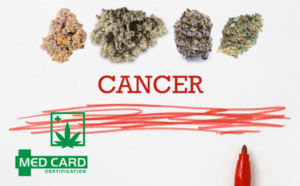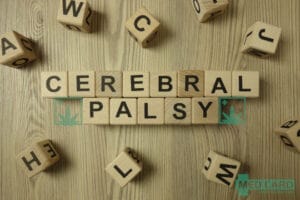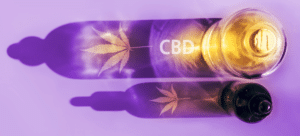What Is Hydromyelia and How Can Treatment Using Cannabis Help
There are a few ways that marijuana might help patients suffering with pain as a result of this condition. First, compounds produced in cannabis called cannabinoids are known to provide powerful anti-inflammatory effects which can help to reduce swelling and pain.
You are most likely familiar with many of the medical conditions for which patients use medical marijuana. But there are also some lesser known conditions which benefit from the cannabinoids produced in marijuana. One such condition is known as hydromyelia.
Hydromyelia often afflicts children with birth defects. It is characterized by a buildup of spinal fluid within the spinal cavity. This buildup of fluid can put excess pressure on nerves coming in and out of the spinal column. This pressure can cause damage to the nerves. This also produces an inflammatory response which results in additional swelling, further exacerbating the condition.
Some less common symptoms of hydromyelia include stiffness, loss of sensation, headaches, incontinence, issues with speech and vision and scoliosis.
Traditional Treatments for Hydromyelia and Their Side Effects
There are two ways to treat hydromyelia. The first is with traditional painkillers known as NSAIDs (nonsteroidal anti-inflammatory drugs). Common NSAIDs include ibuprofen and naproxen sodium. Although these drugs are safer than opioids they still come with some unwanted side effects, especially when overused. The potential side effects include liver and kidney damage and intestinal ulcers and bleeding.
If the maximum safe dosage of an NSAID does not provide adequate pain relief, then surgery may be necessary. The procedures used may provide permanent or temporary relief, but can also, in some cases, make matters worse.
Medical Marijuana for Hydromyelia
One of the most common uses of medical marijuana is the reduction of pain. And medical cannabis is known to be one of the safest ways to treat pain. Although certain strains can cause a high and impaired motor skills in the short term, long-term side effects from medical marijuana are rare and generally mild. Unlike most pharmaceutical pain medications, cannabis is completely non-toxic with zero risk of death due to overdose.
Second, cannabinoids such as THC and CBD are known to provide relief from neuropathic pain — or pain resulting from nerve damage. Pain signals are mediated by our own naturally produced endocannabinoids. Supplementing this process with CBD and THC can tame pain signals resulting from damaged nerves.
And, third, CBD has been shown to provide neuroprotective properties which can help to limit damage to nerves.
The cannabinoid which is responsible for the high produced by smoking marijuana is THC. In its raw state, however, marijuana contains THC acid, or THCa rather than THC. Although still known to provide pain relief, THCa is non-psychotropic and does not cause a high. Certain cold extraction methods can produce cannabis oils which provide both CBDa and THCa.
Parents who do not have access to medical marijuana may consider using THC-free CBD oil products. These products are produced from cannabis strains which are high in CBD but practically devoid of THC. If there are no local dispensaries, CBD oil products can easily be purchased online and, in some cases, in stores which carry natural herbal remedies.
Strains of Medical Marijuana Recommended for Hydromyelia
When we think of marijuana strains, we often picture the resinous dried buds that are smoked for relief. However, children should not be smoking cannabis.
Each strain of marijuana produces a particular blend of cannabinoids and other beneficial compounds such as terpenes. Terpenes work with cannabinoids to provide added relief. Some of these blends are more effective than others for particular conditions.
These resins can be extracted from the flowers while retaining the original mix of cannabinoids and terpenes found in each particular strain. The resulting product is known as full-spectrum cannabis oil or tincture. These products can be administered orally without having to be smoked.
For treating any kind of childhood disease THC should be very carefully administered in small doses — or not at all. Many strains offer a high-CBD, low-THC profile. Here are some them:
- CBD Mango Haze (1:1–2:1 CBD and THC)
- CBD Critical Cure (2:1)
- Harlequin (5:2)
- ACDC (20:1)
- Ringo’s Gift (24:1)
- Stephen Hawking Kush (5:1)
Cannabis oils produced from these high-CBD strains may provide some level of THC. Even small amounts of THC may provide added relief for hydromyelia pain, and they might do so without causing a noticeable high.
When purchasing CBD-only oils full-spectrum products are recommended. Although these will not contain THC they will generally contain some other non-psychotropic cannabinoids as well as beneficial terpenes.
When purchasing from a dispensary, discuss your needs with your budtender. If the dispensary does not carry any of the strains listed above they may carry a strain with similar properties.
Always consult with a qualified and knowledgeable physician before putting your child on any medical cannabis treatment regimen.
How To Get Medical Marijuana for Hydromyelia
If you are a resident of a legal state interested in trying medical marijuana to treat Hydromyelia or other medical conditions, you will first need to consult with a certified doctor to get a medical marijuana card. To get started, simply fill out the MMJ patient registration form, press submit and a physician or clinic representative will contact you as available.













